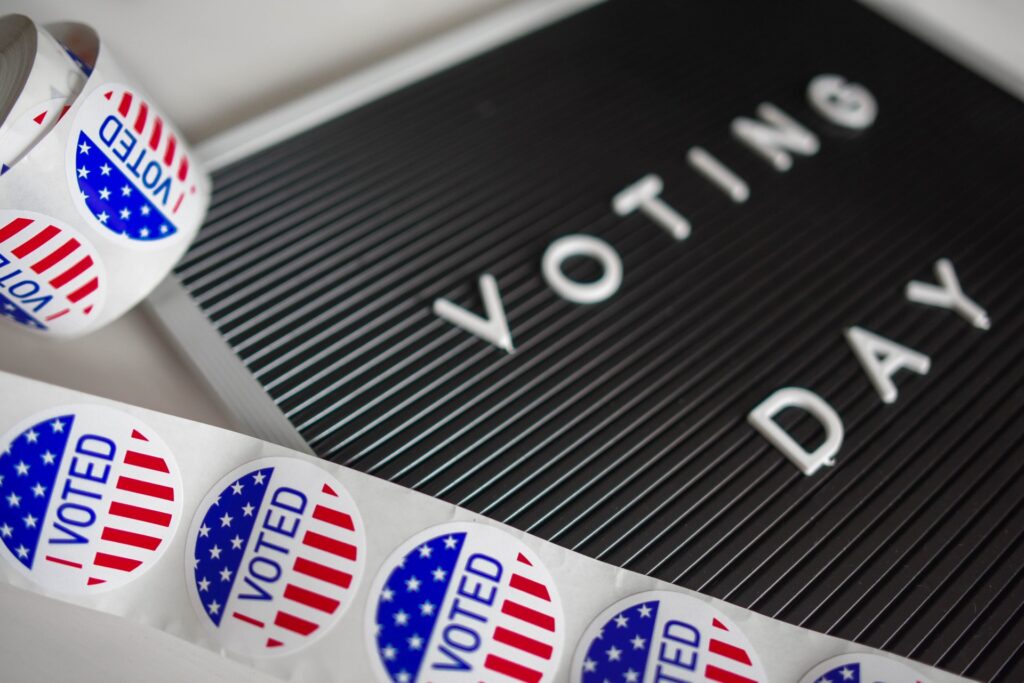
Six Research Based Methods for Teaching Civics Education
If you’re reading this blog, you probably agree that as a country we can do a better job of teaching civics education. So I don’t have to waste time explaining that.
I’ll bet you’re much more interested in how we can do a better job. And that’s where these six research based methods for teaching civics come in.
Below, I’ll start with a brief description of where these research based methods came from. Then I’ll list each of the six, along with a brief explanation and some examples of resources you can use to implement in your own class or school.
The Six Research Based Methods for Improving Civics Education:
- Actually Teach Civics
- Current and Controversial Events
- Service and Project Based Learning
- Offer Extracurricular Activities
- Student and Youth Governance
- Simulations of Democratic Processes
Where Did These Research Based Methods Come From?
These practices came out of research conducted by CIRCLE – the Center for Information & Research on Civic Learning and Engagement.
In 2003, they brought together leaders in civics education to try and identify best practices and steps forward. Their initial report, The Civic Mission of Schools, as six promising practices that could help students learn civics.
Fast forward a decade, and seemingly little has changed. Students still scoring poorly on NAEP and other standardized tests, and an audit of schools would probably find that they are often not doing a great job of implementing these six practices.
This led to the publication of a new report – Guardian of Democracy: the Civic Mission in Schools – in which these “promising practices” were relabeled as “proven practices” given the intervening years of research that indicated that they did in fact work.
Subsequently, the Education Commission of the States and the National Center for Learning and Civic Engagement took these six research based methods and used them as the foundation for a final publication – Guidebook: Six Proven Practices for Effective Student Learning.
In other words, these methods have been around for a while. They all make sense. The challenge is implementing them on a wide scale.
So let’s get to it and talk about how you can help with that.

Actually Teach Civics
So the first research based method is painfully obvious: actually teach civics.
Provide instruction in government, history, law, and democracy.
You might be thinking, “Duh, don’t we already provide instruction in government, history, law, and democracy?”
And on paper, we might. The 50-State Comparison: Civic Education Policies from the Education Commission of the States, every state requires civics instruction. But the devil is in the details.
New Jersey’s social studies standards require the infusion of civics, and in theory it should be taught throughout high school. But in reality, the immense breadth of those standards means that teachers often end up spending all of their time teaching history and little if any of their time teaching civics.
In the best of all possible worlds, we would have explicit instruction in civics and government – through a stand alone course – as well as an infusion of civics throughout the entire curriculum.
Some states are moving in this direction. Illinois, for example, requires a civics course in high school, and this summer they also passed a law requiring a civics course in middle school.
However, it’s important not to go too far down this road. Many states have also begun requiring the use of a high stakes test to graduate. Tests don’t teach, and it’s not necessary to implement high stakes assessments to make sure that there is direct instruction in civics and government.

Current and Controversial Events
This next one is one of my favorites, and if you spend much time reading this blog you’ll know that – teach current and controversial issues.
Incorporate discussion of current local, national, and international issues and events in the classroom, particularly those that young people view as important to their lives.
You can’t teach civics, government, and civic engagement in a vacuum. Just teaching about the three branches of government and the text of the Constitution isn’t going to help. Students need to take their newfound civics knowledge and apply it to something real – current events and controversial issues.
For teaching current events, one of my favorite resources is CNN10. It’s a great daily 10-minute video that gives you students just enough info to know what’s going on in the world – and whet their appetite for more. Check out this set of discussion questions to use with CNN10, and if you’re worried about whether or not it’s biased check out my analysis here (TLDR – it’s not).
Besides general knowledge of current events, you also want to give your students a chance to grapple with controversial issues. C-SPAN’s Classroom Deliberations are awesome resources for teaching these kinds of issues. And here’s a list of controversial issues that you should consider using in class.

Service and Project Based Learning
The third research based method is all about taking what you’ve learned and putting it into practice. Students need opportunities to engage in service learning or project based learning.
Design and implement programs that provide students with opportunities to apply what they learn through performing community service that is linked to the formal curriculum and classroom instruction.
Community service and service learning is a great way to help your students appreciate that they are part of a larger community. And ultimately, that’s one of the most important lessons a good citizen needs to learn. That’s why I always loved hosting a blood drive in my school.
But there are tons of different ways to implement project-based learning and help your students apply what they’ve learned. Project Citizen is a great, full-fledged curriculum. Students learn about the process and complete a project focused on an issue they care about. Then there’s YPAR – Youth Participatory Action Research. And for something a little more tech-savvy and media oriented, check out C-SPAN Classroom’s StudentCam competition.

Offer Extracurricular Activities
Research based method and proven practice number four is where things start to get out of the box – and outside your realm as a classroom teacher – offer a wide range of extracurricular activities.
Offer extracurricular activities that provide opportunities for young people to get involved in their schools or communities.
In Bowling Alone, Robert Putnam argued that American society was suffering because people were no longer participating in civic and social organizations. His key insight was that these organizations and relationships are the web that bind us together.
In a school with a strong community, students learn to be a part of this web when they join one of many extracurricular activities. For over a decade, I was the yearbook advisor in my school, and I saw how that club gave students a responsibility that forced them to rise to the occassion.
I saw how athletes, especially those with coaches who cared about academics, got better grades than other students. Students took on the roles of peer leaders and they competed at mock trial. I saw them compete in the chess club and at the spelling bee. And don’t get me started on choir and band.
The more opportunities you can create for students to participate in extracurricular activities, the better. It gives them opportunities to be leaders, and it helps build the web of your community.

Student and Youth Governance
The next research based method involves giving students an opportunity to find their voice and literally represent someone. By creating opportunities for youth governance, you prepare them to seek out leadership roles in the future. By valuing their voices, you encourage them to speak up.
Encourage student participation in school governance.
An obvious example of this is student council. What could be a better analog for political involvement than running for a position representing the student body?
But this means more than just student government. There are other ways for young people to take on a role as representatives.
For example, there are several states with Youth Advisory Councils (YACs). These organizations provide space for young people to serve in an official capacity in the legislative or executive branches of government. Similarly, you have municipal governments where there are designated positions for youth under eighteen. For example, a school board could include a position for student representatives.
And then, of course, there’s the question of voting. An argument could be made that lowering the voting age – and giving students an opportunity to truly voice their opinions democratically while they’re in high school – would help engage more people. And in some towns where the voting age was lowered to 16, they actually found that voters under eighteen turned out at higher rates than young voters in their 20’s.

Simulations of Democratic Processes
Finally, we come to research based method number six – simulations of democratic processes.
Encourage students’ participation in simulations of democratic processes and procedures
Experiential learning is great, and for civics there’s nothing better than helping students experience what it’s like to be an active citizen.
A simple version of this might be a mock election, in which students research candidates and cast a vote. Something more elaborate might be a mock Congressional hearing or a mock trial.
You can also use games to simulate things. iCivics creates some great online games, like Do I Have a Right. And there are also some great board games out there to simulate elections, like Presidential Game and Election Night. This could also overlap with number four, as extracurricular activities like Model UN, Model Congress, and Youth in Government all provide students with the simulated experience of serving in the government.
How Does Your School Stack Up?
If you took an inventory of everything your students, your school, and your community did… how would it stack up? Are you guys implementing each of these six proven practices and research based methods for civics education?
There’s obviously a spectrum here and nothing is perfect. But anything you can do to introduce one extra activity, give students a simulated experience, or carve out some time for current events and controversial issues is useful.
So set a goal and think about – what’s one thing you can do this year to implement these research based methods for teaching civics?
And for some other suggestions on how to do more with your students, check out this list of six ways to make teaching government fun. You might notice some overlap with this list.